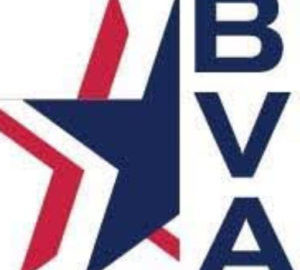In this week’s BVA Happenings, Deputy Director of Government Relations Alek Libbin examines the relevance to our nation’s veterans of recent debt ceiling negotiations and the subsequent legislative actions completed late last night by the United States Senate.
Before I discuss how the Biden-McCarthy debt ceiling deal affects veterans, allow me to explain the debt ceiling, its history, and its role in politics.
While the President collects taxes and spends money, he does so at Congress’s direction. Congress has the power of the purse and sets tax and spending levels. The President proposes his own budget, but Congress decides what the budget is. Since Congress almost always sets spending to be higher than revenue, Congress implicitly instructs the President to issue bonds, a form of borrowing money. However, Congress limits how much debt can be issued via the debt ceiling.
The debt ceiling was created in 1917 to limit debt issued to finance America’s involvement in World War I, with the limit on the debt being $1 billion (equivalent to $23.7 billion in 2023). The U.S. and Denmark are the only nations with a debt ceiling. Raising the debt ceiling is not the U.S. borrowing money to pay for new activities, it’s the U.S. paying for services already rendered—similar to the way employees are paid after work is performed, instead of before.
If the U.S. were to not raise the debt ceiling, it would be economically calamitous. The country would lose its dominance as an economic superpower and would, very likely, be plunged into a depression with much of the rest of the world. On June 1-2, payments are made, including veterans’ benefits, Social Security, Medicare, Medicaid, and retirement pay. If the debt ceiling were not raised, it would be the last time these payments are sent until it is raised. Immediately, government services would grind to a halt. For example, the Department of Veterans Affairs (VA) would be unable to provide services and payments. Other federal government employees would either be furloughed, laid off entirely, or forced to work without pay, having their pay delayed or not be paid at all. This would include VA nurses, doctors, and other employees. Interest rates would spike, and banks would stop lending, meaning that VA programs that assist veterans in obtaining loans would be effectively voided by the bank being unable/unwilling to lend.
One may think that VA’s backing of a loan would result in the bank lending to veterans, but it is indeed the opposite. Because VA, or the federal government, is not making payments, the bank would view that loan as a liability rather than an asset and would evaluate the borrowers on their own merits only. Similarly, medical providers whom VA pays would most likely stop providing services or would severely limit the services they do provide.
A brief default would cost the U.S. at least two million jobs while a protracted default would cost nine million jobs. The stock market could collapse and retirement savings along with it. To not raise the debt ceiling would be the equivalent of not paying your mortgage. The bank would evict you, seize your assets, and garnish your wages immediately.
Thankfully, everyone involved in debt ceiling negotiations understands these consequences, resulting in the ceiling being raised each time we have come close to hitting it—all 22 times since 2000. In other words, the debt ceiling is mostly political theater but, if someone happened to forget their lines, the results could be catastrophic.
With the Senate vote just last night and a Presidential signature immediately ahead, it appears the McCarthy-Biden debt ceiling deal will prevail, and that veterans will benefit from the deal. Unlike other non-defense spending, the VA budget will increase and is exempted from spending freezes. The VA budget will increase to more than $320 billion in FY24, a 6.6 percent increase from the current $300 billion. The medical budget will be $121 billion in FY24, a bump of 2 percent from this year. Further, $20 billion will be put into the Toxic Exposure Fund as part of mandatory spending instead of the previous GOP proposal of $5 billion as part of discretionary spending. If this deal had not occurred, VA’s FY 2024 budget would have been frozen, and benefits would have effectively shrunk as inflation increased costs. Further, the Toxic Exposure Fund’s funding amount and method would remain up in the air. This is important because it gives you security in knowing that your benefits are safe and will remain intact while growing with inflation—and that they will continue as before despite Washington politics.
Both Speaker McCarthy and President Biden faced internal party conflict in working out the compromise. Because they appear to place veterans in high regard, they acted admirably in the protection of veterans’ care in this instance. While both sides are unhappy with other aspects of the deal, the sign of a good compromise is both sides being unhappy—as the saying goes.
The debt ceiling fight caused many to panic and worry about the effects it would have on themselves and those they care for should a compromise not be reached. Thankfully, everyone remembered their lines, albeit begrudgingly.


